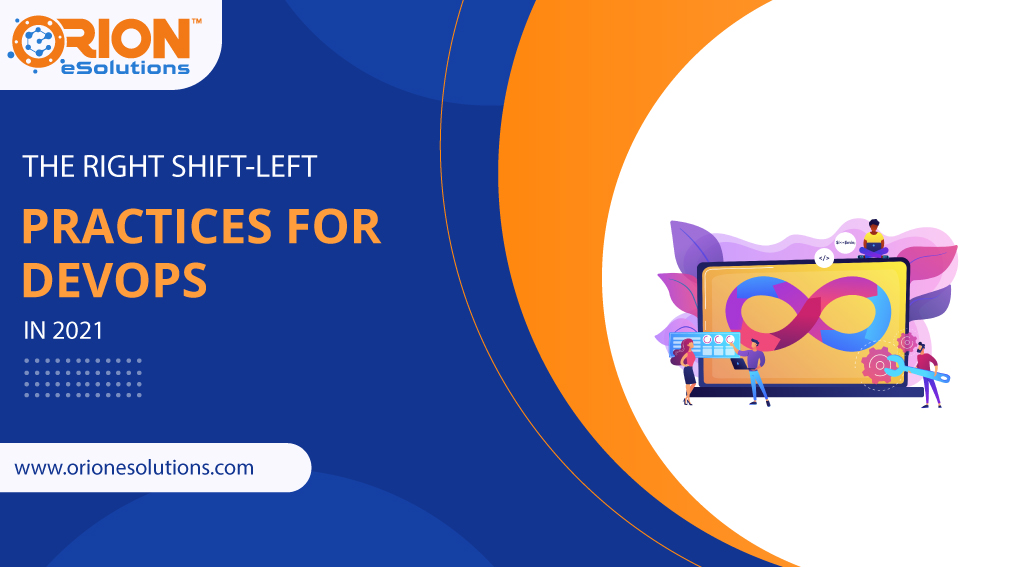DevOps is an amalgamation of corporate cultural philosophies that facilitate faster delivery of applications and services. In the simplest term, it is when the development team and the operation team works in tandem. And as usual, the simplest term is the most accurate term. In 2021, DevOps is a juggernaut in the software development and infrastructure management landscape. And rightly so. The numbers reflect the same. According to Verified Market Research,
- DevOps market was at $3.62 Billion in 2018.
- The market will exhibit a CAGR of 7% from 2019 to 2026.
- The market will reach $20.01 Billion at the end of the forecast period.
But why? What is so appealing about two teams working in sync? Does it have any tangible benefits? The answer is yes. We can turn to Upguard for some unbiased numbers regarding these doubts.
- Traditional methods consumed 41% more time for deployment.
- Any errors took 21% more time to be rectified in the traditional method.
- DevOps reduced the time handling support cases by 60%.
- DevOps takes infrastructure improvements very seriously and spends 33% more time on it.
These benefits have lured in a lot of major brands. Some of the major organizations that employ DevOps include Amazon, Etsy, Netflix, Adobe, and HP among a plethora of others. The brands that have successfully implemented DevOps have reported that:
- An improvement was seen in the software deployment quality by 63%.
- 63% were able to increase the frequency of software releases.
- Cooperation and collaboration improved among 55%.
- The code production quality skyrocketed among 38% of them.
Now that we have established the significance of Devops for 2021, we need to narrow down our focus to look at the latest trends in Devops. As per our research, we were able to predict quite a few interesting developments meant to take place in the Devops realm in 2021. Integrated delivery pipelines, low-code automation, enhanced security, and increased speeds were some of them.
But what arrested our attention was the shift-left trend. Shift-left trend seems to transcend all the other development predicted for Devops in 2021 and we at Orion eSolutions have already worked upon a well-researched sprint mechanism to propel all development tasks. . Let us understand this in depth.
WHAT IS SHIFT-LEFT?
The shift-left practice, at its core, means taking an activity typically done at a later stage, and shifting it to an earlier stage. Traditional design structures are defined by requirements, analysis, design, code, test, and deploy, in that order. Shift-left modifies this arrangement to keep feasibility and speed of deployment as the priority rather that the sequential coverage of the steps. This in turn allows the team members to focus on quality development from the very beginning.
Processes such as reviewing and testing along with issue detection and resolution are shifted to earlier stages of the sequence. This lets the teams focus proactively on preventing problems. This is a significant shift from reactive functioning to proactive reasoning.
However, like any good practice, certain parameters have to be considered to ensure the success of shift-left. Let us familiarize ourselves with those.
HOW TO ENSURE SUCCESSFUL SHIFT-LEFT PRACTICES
Large projects often carry bigger feedback loops and exhaust a lot of resources. Development wastes accumulate. Development quality deteriorates. And the point of shift-left is eliminated. Some steps to follow in order to make sure this does not happen are:
- All stakeholders must be on the same wavelength: Coders, testers, and other executives must be on the same page with similar thinking patterns for the shift-left to work seamlessly.
- Suitable testing lifecycle planning: Do not view testing as a one-time activity. This helps to analyze errors early and maintain the quality of the product.
- Automate. Automate. Automate coding, testing, and deployment. This means faster executions and more tests in less time.
- Define QC. This helps the product meet quality goals at each stage of its production.
- Analytics matters. Getting early insights into bottlenecks and roadblocks help developers and testers get an idea of what all to shift left.
- Don’t shift everything left. Functional testing, code reviews, UX assessment, and security code analysis are some of the aspects that cannot be shifted left.
By understanding shift-left and its nuances, we have established that this principle is in fact in tandem with the “fail fast, fail often” philosophy. It removes code instabilities and enhances the overall output. Let us conclude this discussion with a happy note.
Related Content:-
- TOP 11 SKILLS TO LOOK OUT FOR WHILE HIRING DEVOPS ENGINEERS
- 7 KEY DEVOPS PRACTICES AND PRINCIPLES TO ADOPT IN 2021
- HOW DEVOPS HELPS STARTUPS? SOME USEFUL TIPS 2021
- WHAT IS DEVOPS? A COMPREHENSIVE ANALYSIS OF DEVOPS ASSESSMENT
- WHAT IS THE ROLE OF A DEVOPS CONSULTANT?
- TOP 5 DEVOPS TRENDS THAT WILL BE DOMINATING 2020
- WHAT DOES A DEVOPS ENGINEER DO? SOME COMMON DEVOPS TOOLS
- Guide to DevOps: Phases, Tools, Uses, and Principles
SUMMING UP
Shift-left is a major trend popping up in 2021. And it will not be the last. In order to amp your DevOps development practices, you need a trustworthy DevOps partner like Orion eSolutions. Someone who is able to work side by side with you in order to scale your business through short term initiatives but keeping your long term vision at the epicenter. The happy note we promised you earlier is that you are at the right place. We offer consulting services, cloud solutions, automation, testing, infra management, source code management and much more.
Connect with us at Orion eSolutions right now to realize how our digital doyens can carve a telling presence for you in your industry with the best DevOps practices in 2021!









